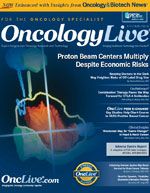Young Hodgkin Lymphoma Survivors Face Gaps in Care
Despite national evidence- and consensus- based guidelines on posttreatment care, fewer than half of adolescents and young adults with Hodgkin lymphoma receive all of the recommended services within the first year after treatment.
Erin E. Hahn, PhD, MPH
Despite national evidence- and consensus- based guidelines on posttreatment care, fewer than half of adolescents and young adults (AYAs) with Hodgkin lymphoma receive all of the recommended services within the first year after treatment, according to results of a pilot study presented at the 2016 Cancer Survivorship Symposium.
In addition, only 30% of survivors at high risk for cardiac damage adhered to long-term recommendations including an echocardiogram, electrocardiogram, or multigated acquisition (MUGA) scan.
“When we examine adherence to guidelines like these, it’s actually an important part of high-quality care to see if we can identify gaps and hopefully close them,” lead author, Erin E. Hahn, PhD, MPH, a research scientist at Kaiser Permanente Southern California, Department of Research and Evaluation, said during a presscast held in advance of the symposium.
Hodgkin lymphoma accounts for 12% of all new cancer diagnoses among AYAs, and while overall survival rate is very high, this population remains at high risk for short- and long-term effects related to their treatment throughout survivorship. The study evaluated electronic medical records of 354 AYA patients aged 15 to 39 years who were diagnosed with Hodgkin lymphoma between 2000 and 2010. The patients were diagnosed, treated, and followed for at least 2 years at the Kaiser Permanente Southern California integrated healthcare system.
Using National Comprehensive Cancer Network (NCCN) guidelines, the investigators measured adherence to short-term recommendations, including oncology visits, labs, imaging, and the flu vaccine, which was categorized as preventive care. Nearly all of the patients had an annual visit with their oncologist within the first 5 years of treatment (96%), and 70% received the recommended labs. Two-thirds received a recommended CT scan within the first year.
However, only 20% of patients received the recommended flu vaccine, bringing overall adherence to 48% within the first 12 months. “I was happy to see that most patients were seeing their oncologists and having some appropriate testing in the first 5 years after treatment,” said Hahn. “I think there is work to be done to increase awareness of other guideline recommendations, and potentially access to services.”
The study also examined a subgroup of patients who were at least 10 years out of treatment and had received high-dose anthracycline- based chemotherapy plus radiation. NCCN guidelines recommend that this population of high-risk patients receive cardiac screening. A majority of AYA patients received annual blood pressure testing, but fewer than half received one of the other recommended modalities— an echocardiogram, electrocardiogram, or MUGA scan. Researchers noted that AYA patients who were diagnosed with Hodgkin lymphoma between 2006 and 2010 were more likely to adhere to posttreatment recommendations than those diagnosed between 2000 and 2005. “One of our hypotheses was that as these guidelines became more familiar to clinicians and hopefully also to our patients, it might actually change the patterns of care that we see,” Hahn said, “and that did turn out to be true.”
The study authors plan to expand their research to include a larger cohort of patients and investigate long-term recommended services. Hahn noted that next steps involve designing and implementing systematic programs to address gaps in recommended care for the AYA patient population.
Presscast moderator and ASCO expert Merry- Jennifer Markham, MD, added that Hahn’s study highlights a need for further interventions. “The survivorship care is really crucial in the adolescent and young adult population of Hodgkin lymphoma survivors because many of them—most of them, in fact—have long lives ahead of them,” she said. “Clearly, we have some opportunities ahead of us to improve adherence to posttreatment guidelines and hopefully, as a result, survivorship outcomes for all.”
Hahn EE, Wu Y, Delgadillo JG, et al. Use of recommended post-treatment services for adolescent and young adult Hodgkin lymphoma survivors. Presented at: 2016 Cancer Survivorship Symposium; January 15-16, 2016; San Francisco, CA. Abstract 107.




